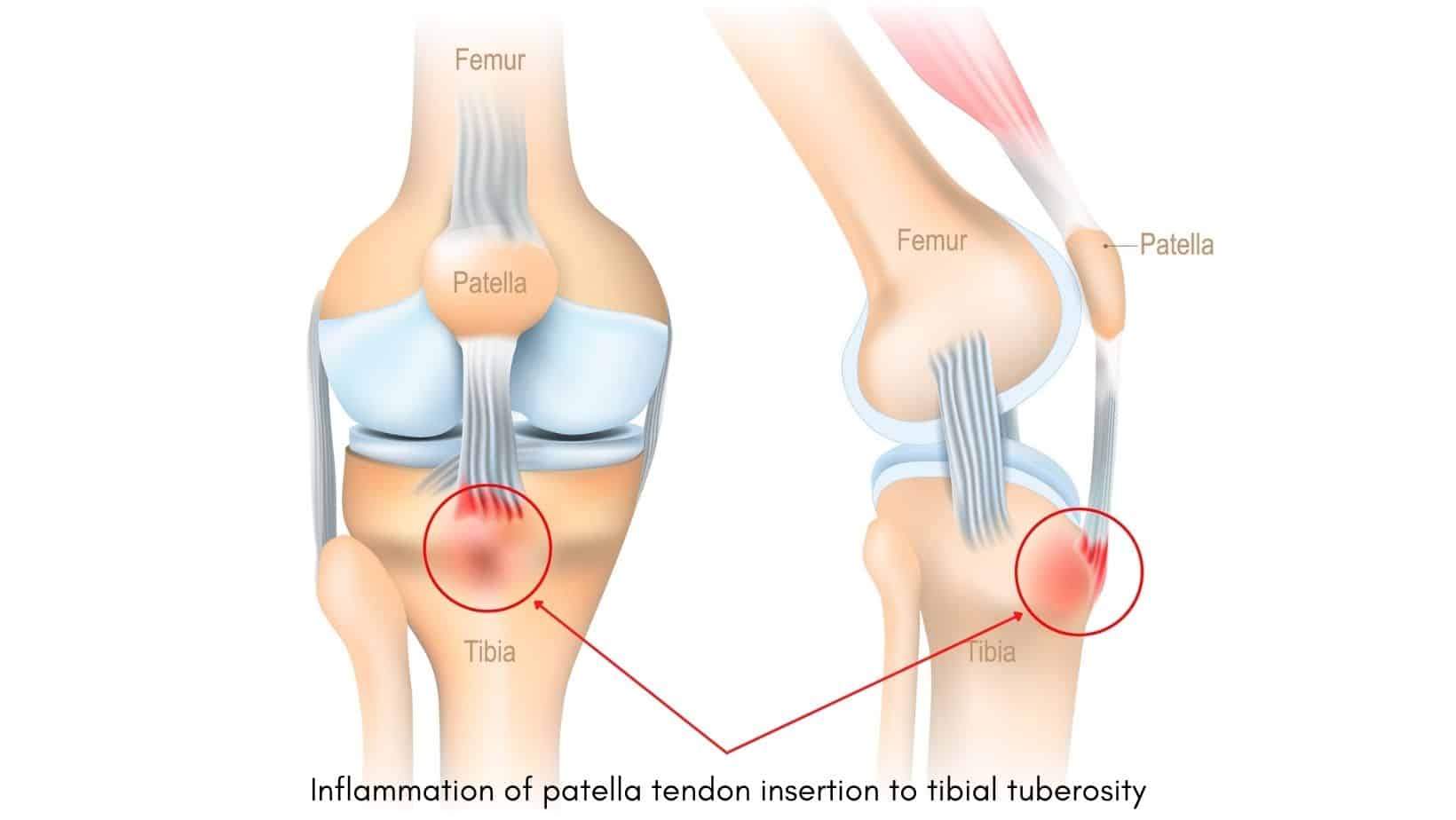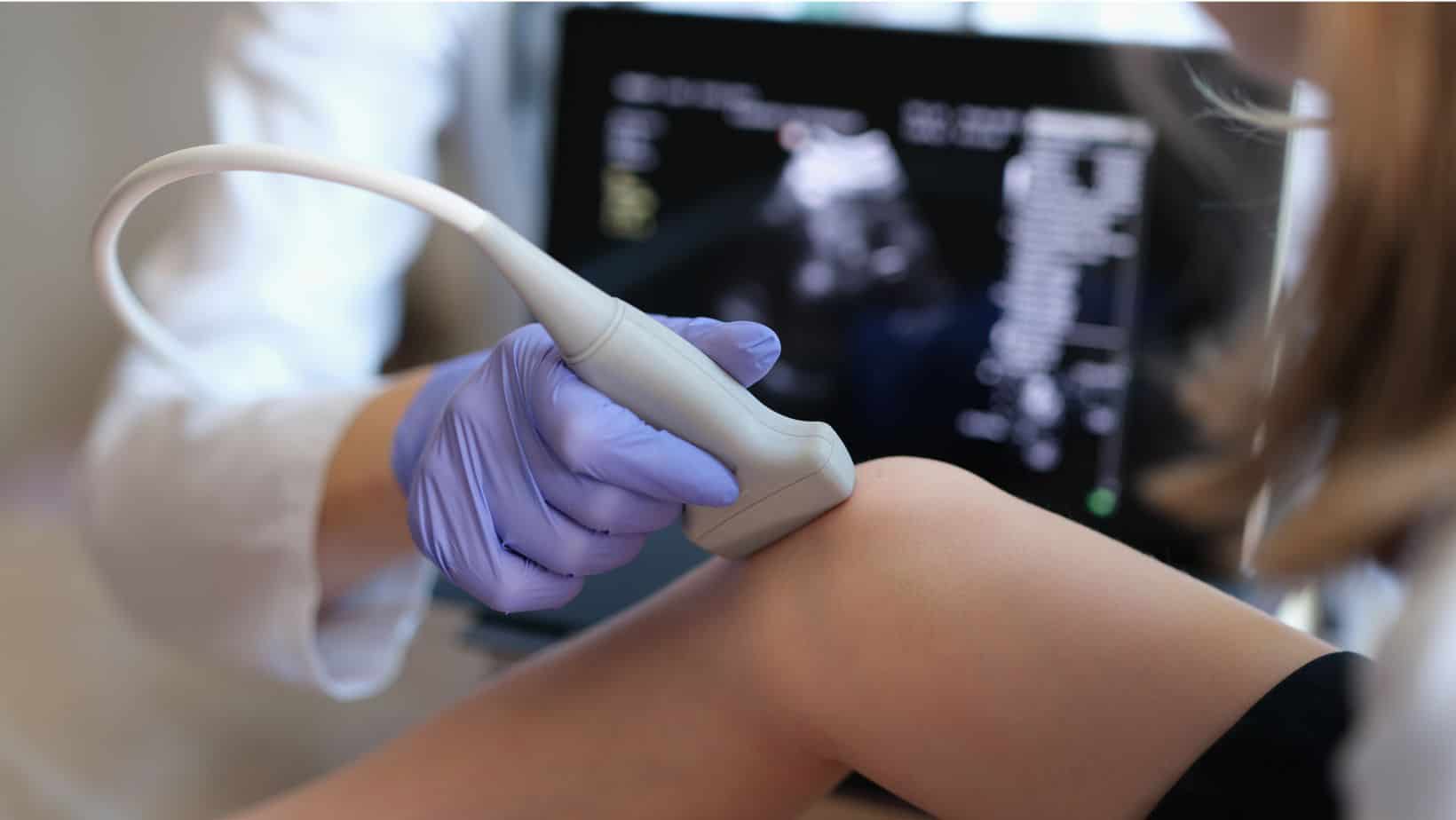Sinding Larsen Johansson Syndrome
Read More >
You may see Osgood-Schlatter Disease written differently on different websites, books and papers: Osgood Schlatter disease, Osgood Schlatter’s disease, Osgood-Schlatter’s disease are all correct. Named after Dr Robert Osgood and Dr Carl Schlatter, both surgeons from the USA and from Switzerland, respectively. These two surgeons defined the pathology of knee pain in the early 1900s.

They defined Osgood-Schlatter Disease as a painful condition at the front of the knee, caused by repetitive contraction of the quadriceps muscle creating traction at the tibial tuberosity where the patella tendon inserts. This occurs in children or adolescents as their immature skeleton is more vulnerable to traction forces. This traction can cause inflammation and an enlargement of the bony prominence of the tibial tuberosity.
Sever’s disease and Sinding-Larson-Johansson are two other similar traction apophysitis pathologies that affect the Achilles tendon insertion at the heel and the quadriceps tendon insertion to the top of the patella.
Osgood-Schlatter disease causes include repetitive quadriceps contraction, which is usually through sport. This is especially in sports that involve a lot of sprinting, jumping and kicking, such as basketball, gymnastics and football. The volume of activity is an important part of the cause. Osgood-Schlatter disease is often seen after a period of increased exercise or sports participation or after a sudden return after a break, which may have been a holiday or a break forced by a different injury.
The typical age seen to develop Osgood-Schlatter disease is 12-15 years old for boys and 10-12 years old for girls, this difference is related to the different age of skeletal development between the sexes (Gholve et al, 2007).

The symptoms of Osgood-Schlatter disease are, pain at the front of the knee on the tibial tuberosity, a lump or bump over this point, it can occur bilaterally (on both knees), and will usually have flair ups of pain and inflammation related to the amount of activity. Sometimes people describe this as general leg pain or growing pains. However, the duration of pain can last for several days, or weeks, after activity with Osgood-Schlatter disease. Pain is rarely extreme and many children can continue to play sports with it and might do for a long time unless the pain increases further. If sport is continued to be played or if the volume or intensity increases, this is a usual cause for the pain to worsen and the child may no longer be able to play through the pain.

Osgood-Schlatter disease is very localised and superficial, and therefore relatively simple to diagnose in with a clinical examination. The more subtle the pain and inflammation the less clear it may be. The inflammation of this condition usually makes the tibial tuberosity warm to touch, as well as painful, and physically enlarged. It will be painful to work the quads against any resistance. A common test for Osgood-Schlatter disease is to have the patient seated with their knee flexed to 90º, hold their shin still and ask them to try to straighten their knee. It is still important to clear for other similar conditions as there are several differential diagnoses that can present with some similar symptoms such as a tibial tuberosity avulsion which needs different treatment and management.
In cases where the diagnosis is not certain, or further evidence is desired, radiological imaging such as x-ray, MRI or ultrasound can be used. A study looked at the use of ultrasound as an alternative to x-ray imaging, with the benefits of no radiation, and the results in this study showed similar results in terms of diagnosis and classification of Osgood-Schlatter’s Disease as found on x-ray (Blankstein et al 2001). An X-ray of Osgood-Schlatter’s disease will show various stages of the condition (Hanada et al, 2012).

Upheaval or slight elevation of the tibial tuberosity.
Radiolucency of the tibial tuberosity.
Fragmentation of the tibial tuberosity.
This is not medical advice. We recommend a consultation with a medical professional such as James McCormack. He offers Online Physiotherapy Appointments for £45.